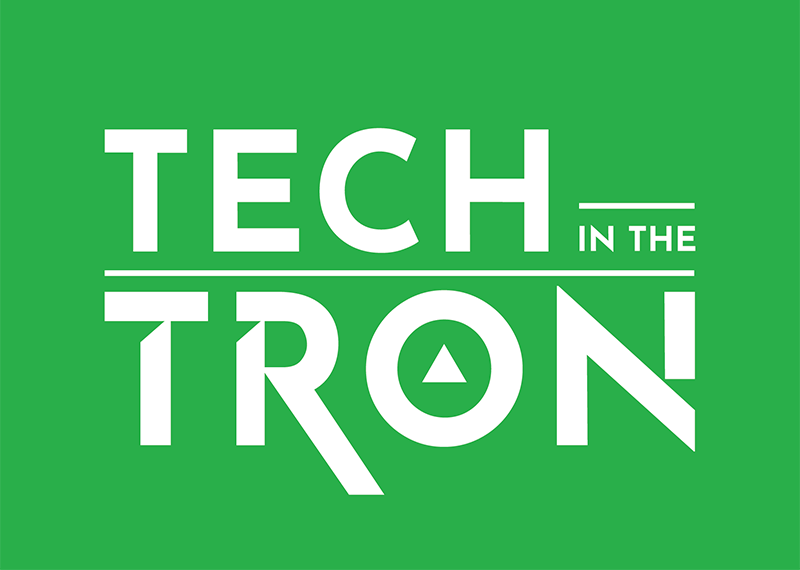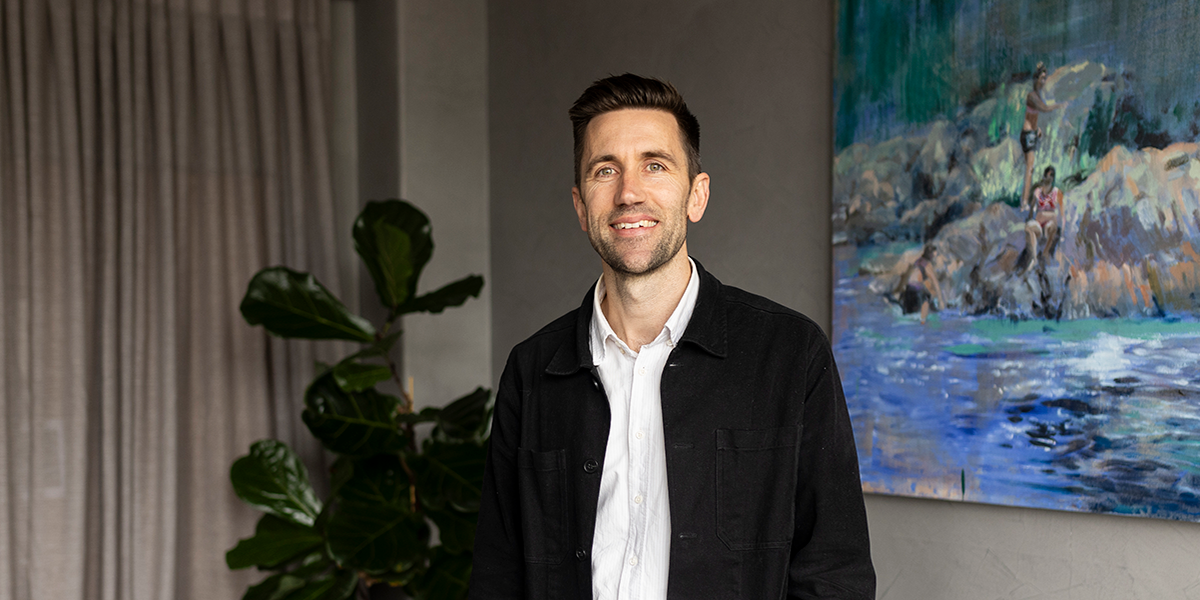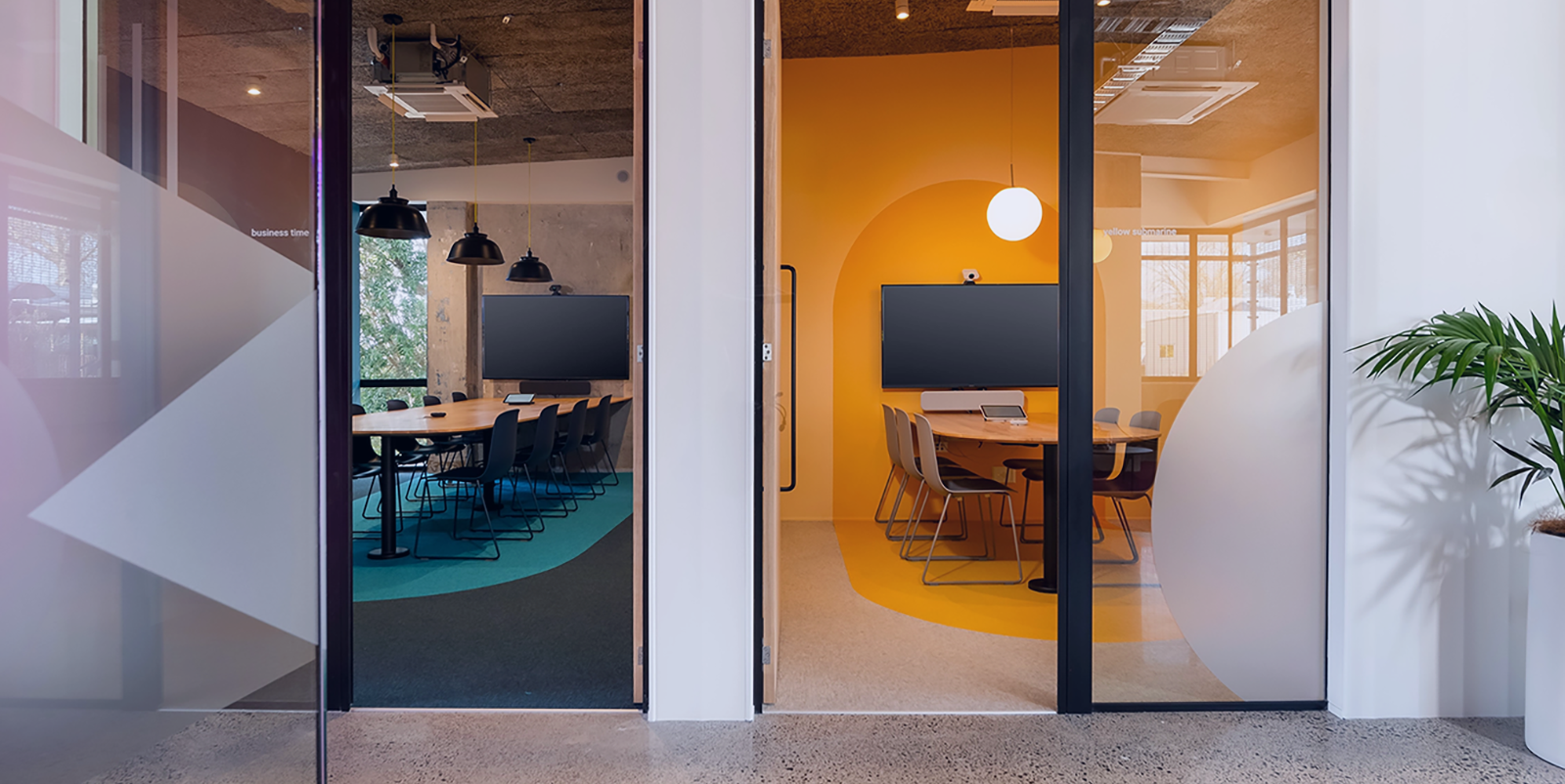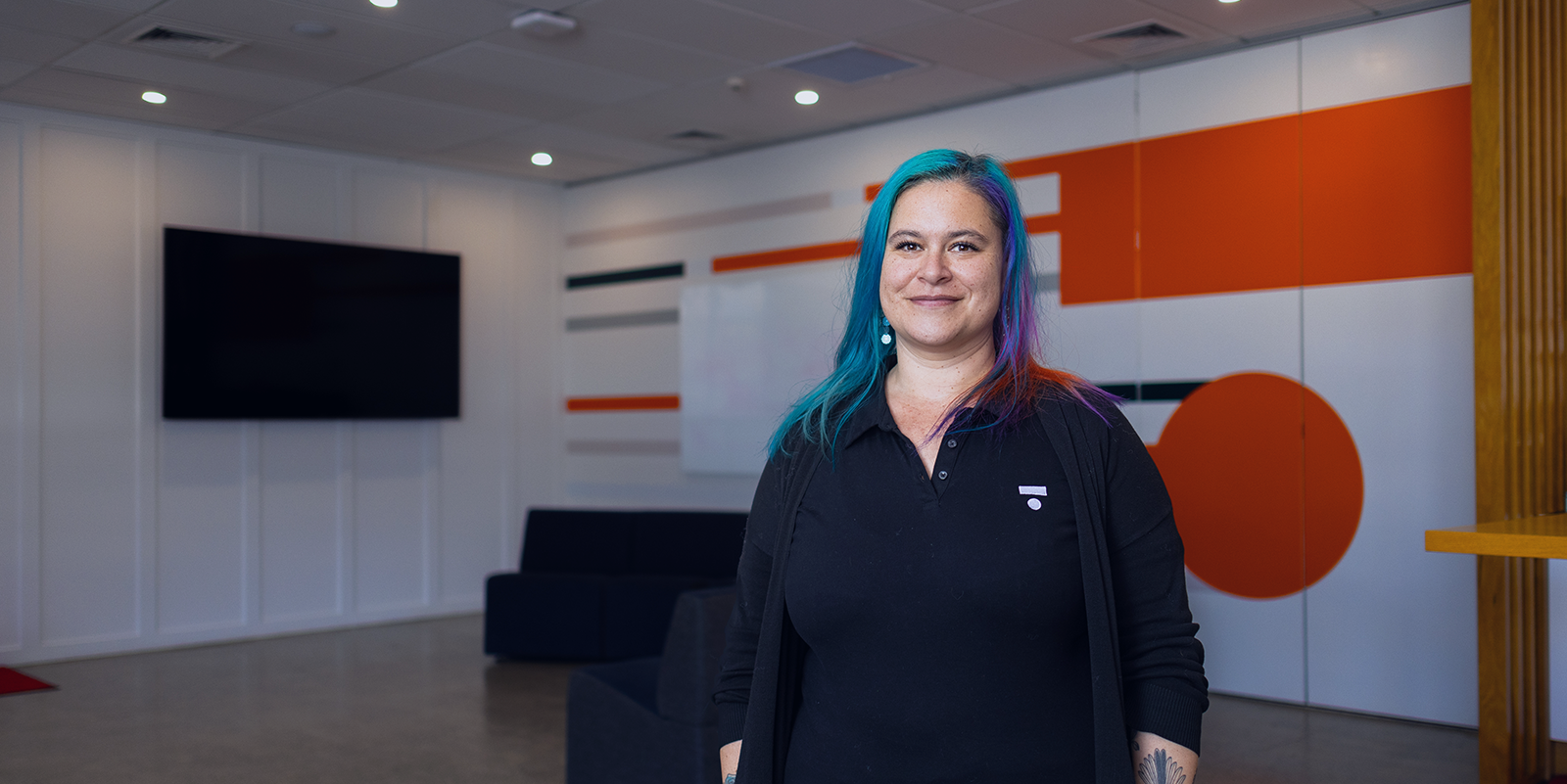How important is spatial and interior design to tech business performance?
The common misconception is that interior design is mainly about aesthetics, and while we love creating beautiful spaces, getting the design of your tech workplace right can have a dramatic effect on your team’s performance. A considered design encompasses ergonomics, brand expression, productivity, biophilia and the whole user experience.
It plays a crucial role in shaping the work environment and culture, which in turn affects employee satisfaction, productivity, innovation and overall business performance.
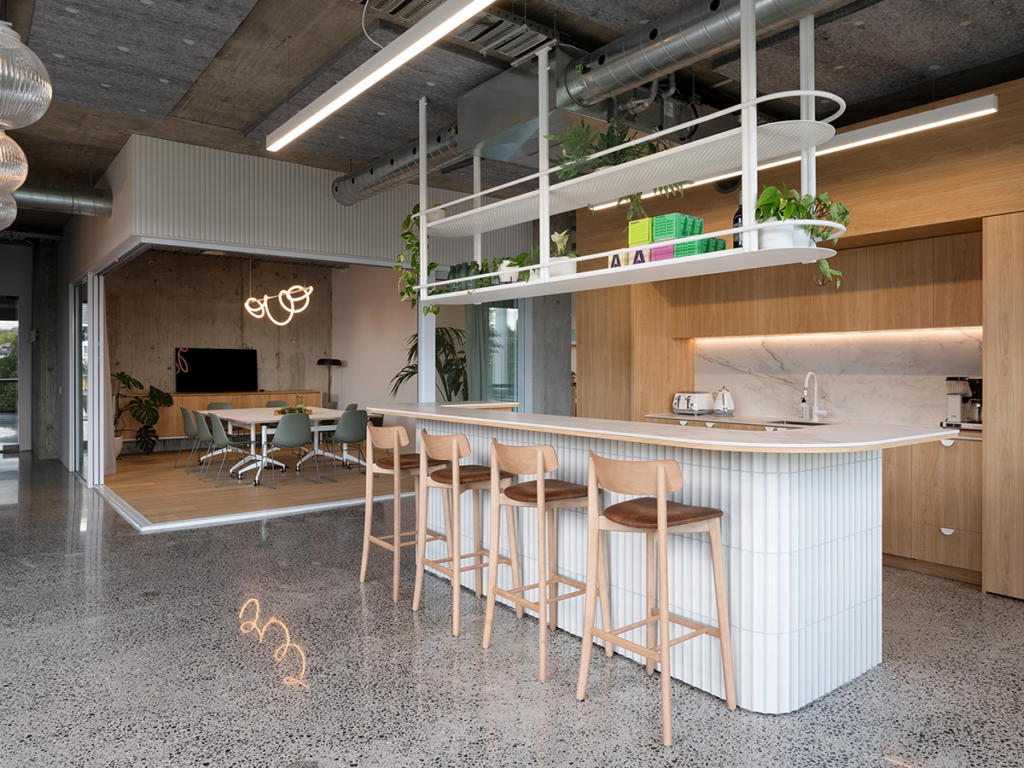
Digital agency – N4 Studio’s interior by Designwell, based in Hamilton’s urban precinct, MADE.
What are the key nuances and principles in designing spaces for the tech industry?
The first is ensuring the space can easily adapt and evolve, as tech businesses have a reputation for rapid growing pains.
Since the pandemic there’s been a shift away from the traditional brick and mortar approach to interiors and an adoption of flexible infrastructure with soft wiring, better acoustics and modular furniture systems such as phone-booths, agile workstations, meeting pods and even ‘dancing-walls’ (mobile partition that can be used to flexibly divide offices into zones).
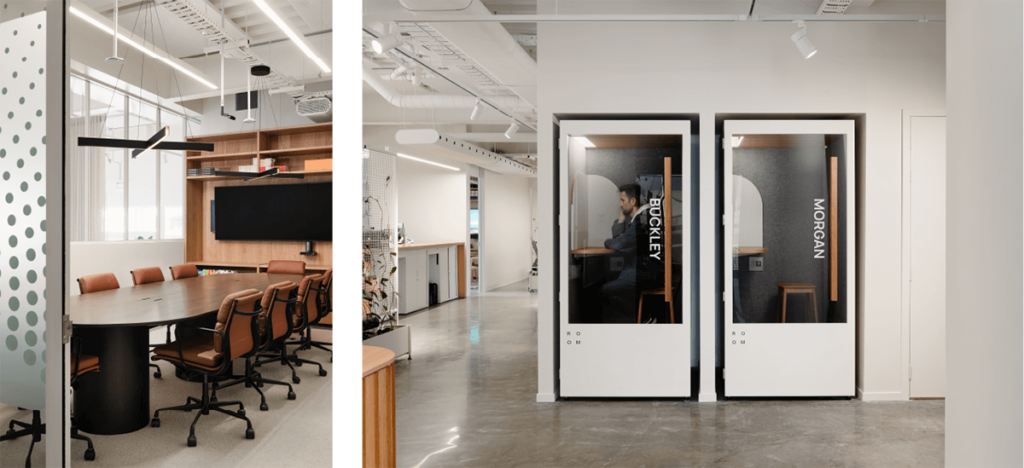
Phone-booths at IT Partners, by Designwell.
This shift to a flexible ‘kit-of-parts’ enables the office to quickly adapt layouts, team sizes or in some cases move to a brand-new space, taking their mobile meeting rooms and dancing walls with them.
Tech companies are also invested in striving for efficiency in work and creating spaces that integrate tech seamlessly.
What tangible outcomes can tech companies achieve by getting their workspaces right?
When our clients invest in a thoughtful workplace design, they’re investing in their people, purpose and mission – it shows their staff they value their wellbeing.
Ergonomic furniture and efficient layouts aren’t just functional, they empower productivity and streamline workflows, enabling teams to perform at their best.
We’ve seen that getting the basics right like prioritising natural light, greenery and varied workspaces creates environments where employees feel valued and inspired.
A considered workspace is crucial for fostering wellbeing, satisfaction and engagement in a team. Get it right and you’ll not only see increased teamwork but a greater sense of pride in your brand which leads to staff retention and talent attraction.
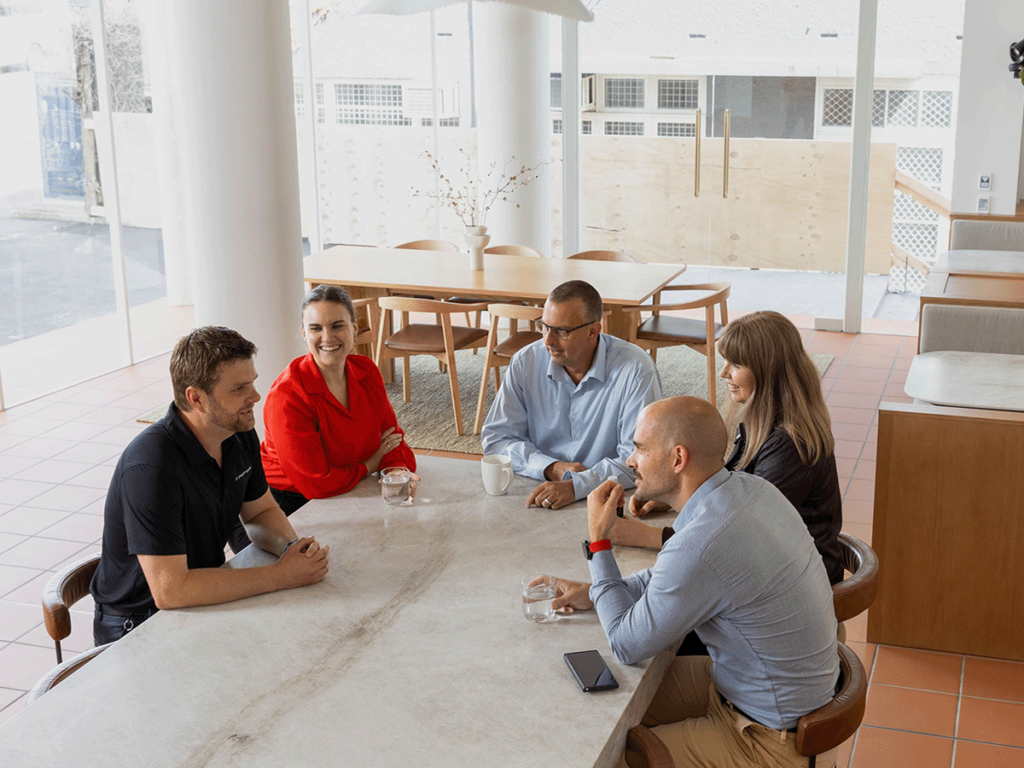
IT Partners’ social foyer space, by Designwell.
What makes Hamilton ideal for tech businesses looking to design future workspaces?
As Hamilton locals we’re clearly biassed, but I do believe Kirikiriroa offers some unique advantages:
Infrastructure and connection
You hear a lot of chat about the “golden triangle” and while overused, we’ve found that being in Hamilton has given us strategic connection to the client and talent pools of both Auckland and Tauranga.
The ease of doing business here can’t be understated and the scale of the city is just right. Everything feels so convenient – getting around the city, popping out for a meeting or navigating kids’ activities during the week.
There’s also a growing collaborative ecosystem of like-minded tech organisations that are beginning to advocate for the region.
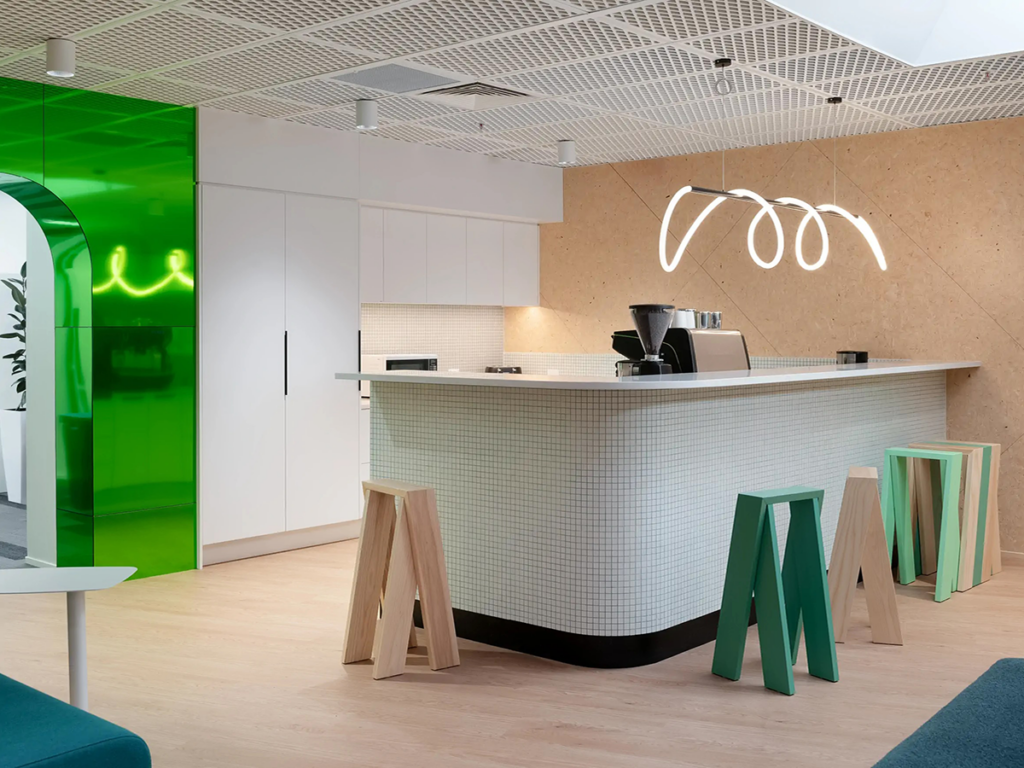
HIKO Hub, designed by Alexander, is a co-working precinct at the University of Waikato for small to medium-sized businesses looking to be part of a connected and innovative community.
Community and culture
Hamilton is one of the fastest growing cities because of the quality of life here. Housing options and flexibility – yes, but more than that is the welcoming Waikato way, a connection to the land and our surroundings and of course the access we enjoy to so many awesome experiences among green spaces, lakes, rivers and beaches.
The city is steadily growing its lifestyle and entertainment options and creating positive momentum that is exciting to be a part of.
This seems to have started with Victoria on the River and the Riverbank Lane development, continuing with the Waikato Regional Theatre that’s due in 2025 alongside new hotels that have been announced.
Redevelopments like MADE Market in HamEast and recently upgraded attractions like Hamilton Gardens, Hamilton Zoo and Waikato Museum have all become places of pride and connection for the community.
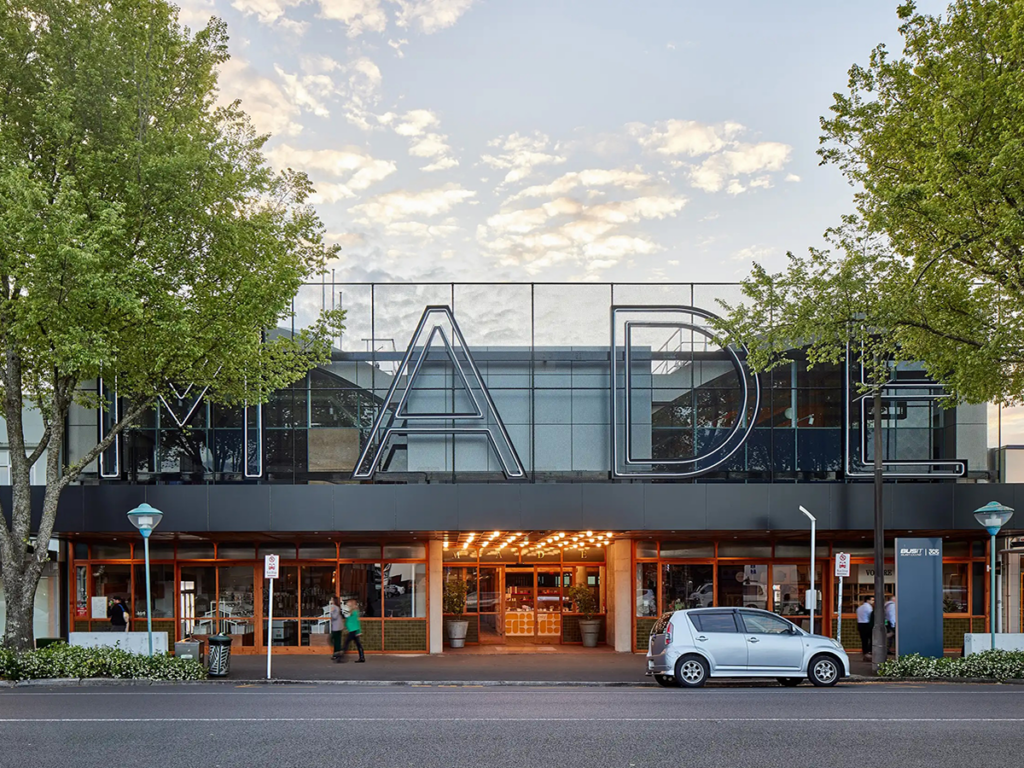
Hamilton’s market precinct, MADE with interior spaces by Designwell and others.
Talent and tech
Waikato University and Wintec both produce a steady stream of skilled graduates, and the tech sector is creating demand for world-class talent who are looking to make the move to Hamilton, Cambridge, Raglan, Ngāruawāhia or other nearby towns.
We also have a vibrant tech community growing in reputation with a regional emphasis on agritech, AI and edtech.
What Hamilton tech companies are doing space well and why have they been successful?
A few recent projects that come to mind are Dynamo6, IT Partners and N4 Studio. The common denominator with these organisations is a commitment by the leadership to create the best possible environment for their people to thrive and one that embodies their brand.
They’ve spent the time to understand what best work looks like for their teams and this is reflected in the workplace strategy of their offices.
Brand expression also sets their workplaces apart – they all feel distinctively unique, and you get a real sense of the team culture when you’re in their environments.
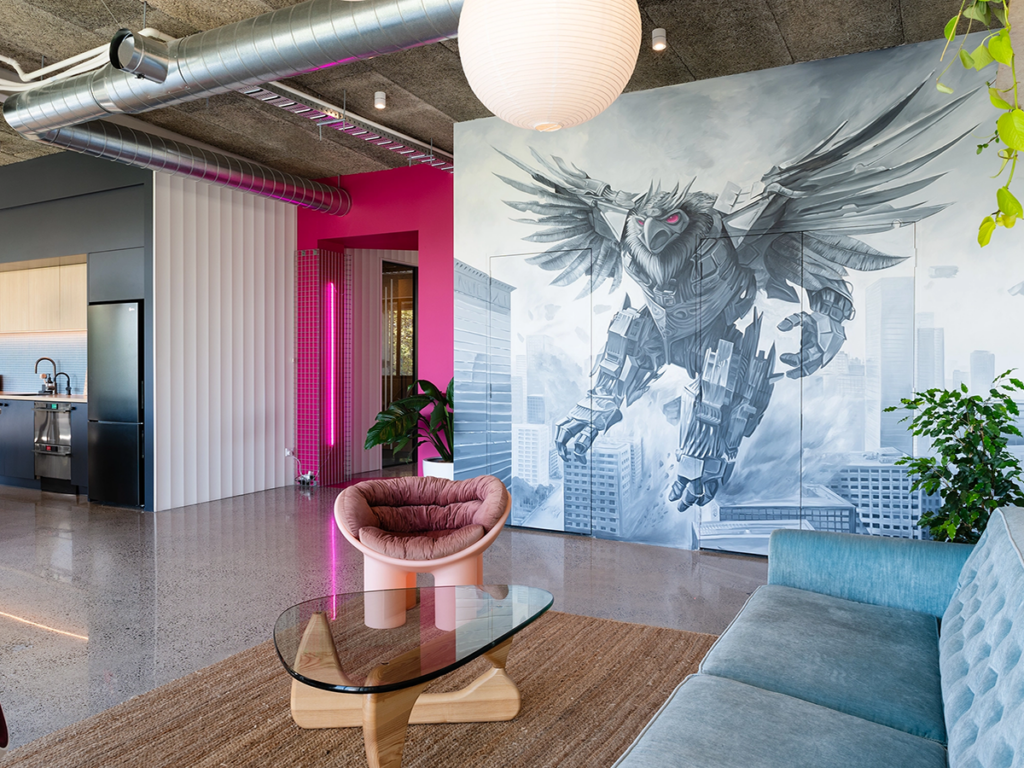
Tech company, Dynamo6’s fresh HQ reflects their focus on creativity, innovation and boldness.
What emerging trends are Hamilton tech businesses adopting when it comes to physical space?
Emerging trends for tech workplaces are largely centred around work flexibility, wellbeing and tech integration.
The hybrid work model continues to be popular and we’re seeing the in-office experience catering to more training, collaboration and social connection.
This has seen the increase in hot-desking, smart lockers and the addition of ‘phone-booths’ ideal for private video calls and collaborating with the wider remote team.
We’re also seeing a rise in spaces that promote health and comfort. This includes the basics like access to natural light and ergonomic furniture, but also amenities like gyms, multi-faith rooms and green spaces.
Tech integration in-office has come a long way in improving the effectiveness and intelligence of our spaces. Proximity sensors across offices give us a more accurate picture of the utilisation of different spaces and what is and isn’t working, and we’re seeing charging and display screens being integrated into a range of more social spaces. Every new office is utilising smaller focus rooms and hybrid spaces that are optimised for collaborating remotely.
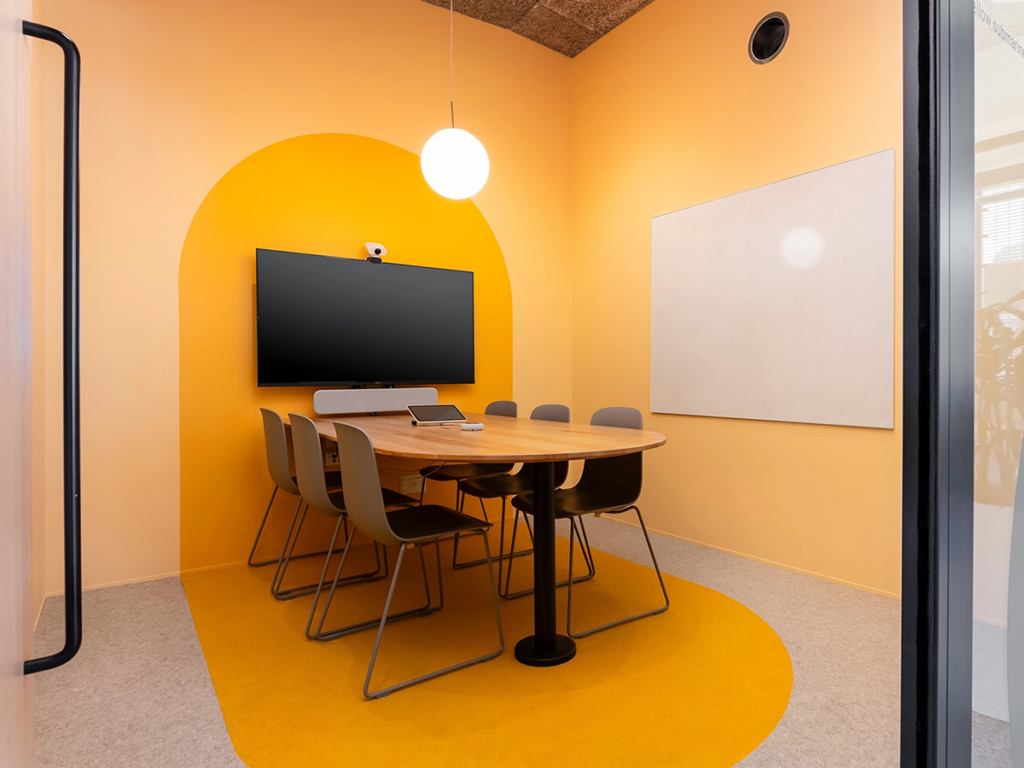
How is AI influencing the design of workspaces in the tech industry?
It’s a fascinating time to be in the tech industry given the rapid rise of AI tools and their quick adoption into daily work life.
While it’s certainly shaking things up, the productivity gains – especially for routine tasks – are undeniable which I believe will lead to freeing up time for more strategic and complex work.
As we gain deeper insights from data analytics, we’ll be able to improve our customer service for our clients and teams.
For us at Designwell, this also magnifies the importance of creating thoughtful spaces that inspire and promote social connection.
Words by Hannah McCreery
Visuals by Karl Drury
